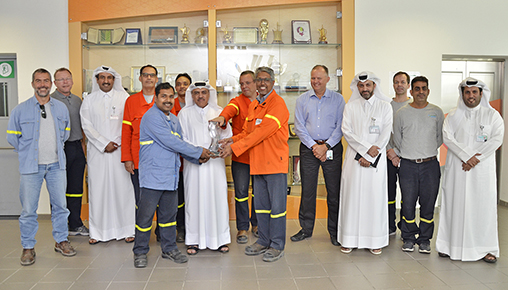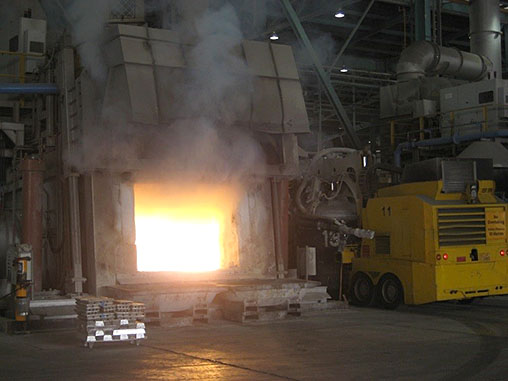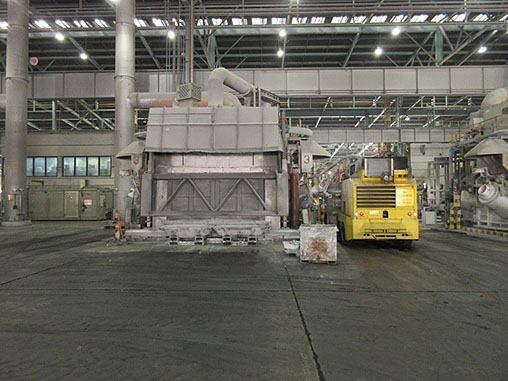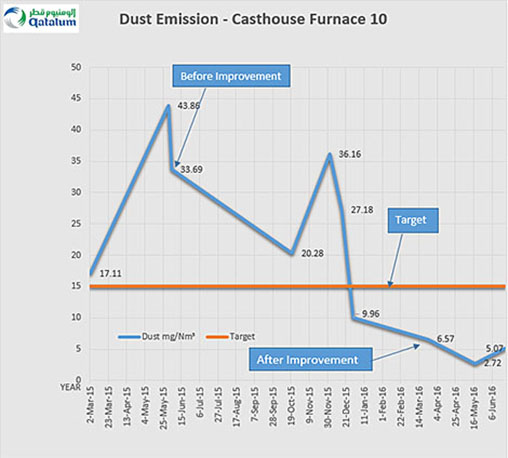
The challenge that Qatalum undertook was to address the uncontrolled emission of dust from the 11 furnaces in Casthouse. These furnaces were not fitted with any dust collection system as per design, which is the normal practice in most smelters and in compliance with practice endorsed by IPCC BAT 2014.

Before improvement After improvement

Before improvement After improvement
What makes this endeavour exceptional is that while solving the environmental issue related to air quality, in addition to the improvement over baseline, there were a number of positive spin offs, with major sustainability benefits:
• Significantly reduce the exposure of employees to dust at workplace.
• Reduced ALF3 consumption for metal fluxing by 50 % - cost saving 350,000 USD/year.
• Producing 1,040 tons extra aluminium per year at almost no cost!
• Saving of 18,500 MWh energy required to produce 1,040 tons aluminium.
• Conservation of non-renewable natural resource – 3.02 million Nm3 natural gas/year required to produce 18,500 MWh electricity.
• Avoided emission of 83,200 tons of CO2/year associated with combustion of 3.02 million Nm3 natural gas/year.
• Employee motivation and satisfaction resulting from success and an improved workplace.
Initial investigations from late 2013 and assessment led to the conclusion that retrofitting with dust collectors was the only solution. At this stage Qatalum top leadership decided to apply QPS (Qatalum Production System) for this project. Accordingly, a professional RCA (Root Cause Analysis) was done and CAPA (Corrective and Preventive Action) developed.
The RCA started in May 2015 which included many stack emission measurements and identified the pouring of liquid metal into the furnace from crucibles as the major source of dust. Many options, trials and associated emission stack measurements under the CAPA process concluded that reducing the speed/rate of pouring the metal dramatically lowered dust emission.

A new procedure was developed and staff were trained to modify the metal pouring operation by late December 2015. The improvement in dust emission from the baseline level of 29.7 mg/Nm3 to 6.1 mg/Nm3 (80% reduction) was achieved and sustained from 29 December 2015, compared to the international benchmark of 40 mg/Nm3 (max.) as per IPCC BAT 2014. The target of 15 mg/Nm3 was surpassed…
The innovative solution developed by Qatalum can be replicated in many aluminium smelters which face the same challenge, with zero investment.

